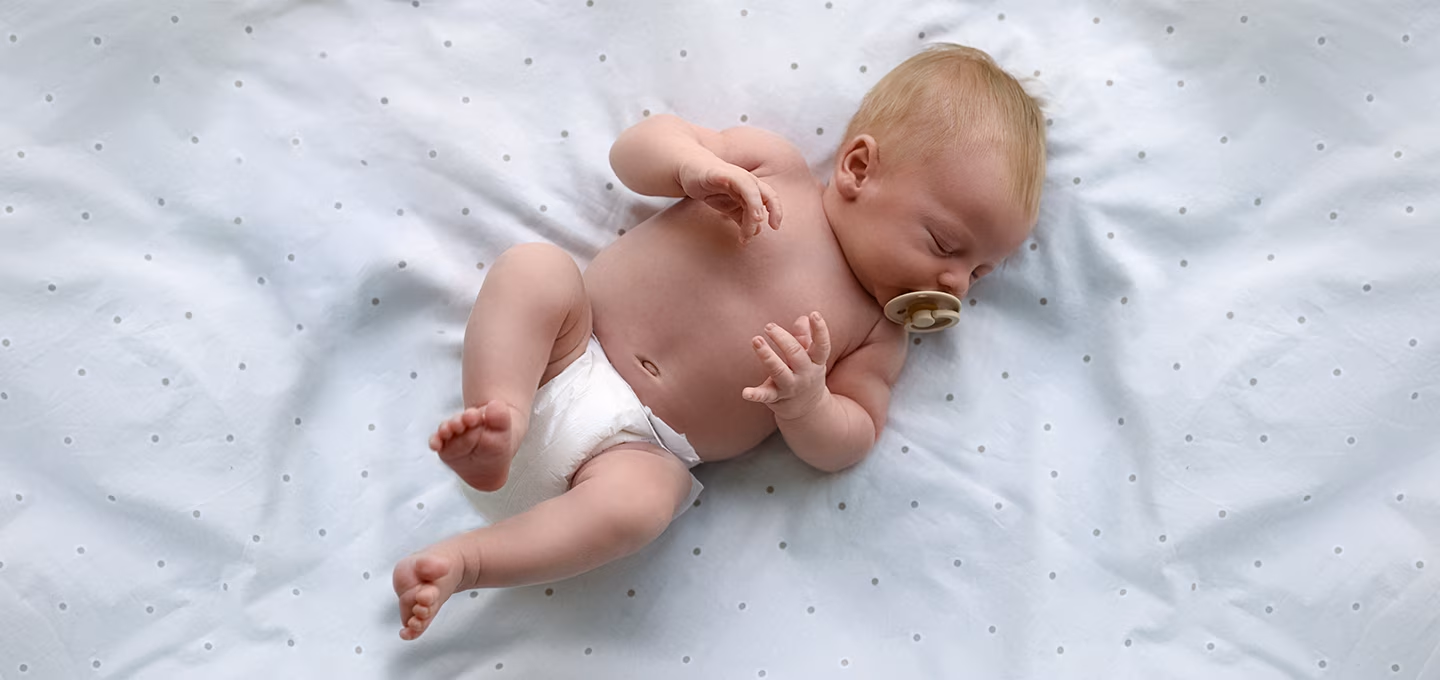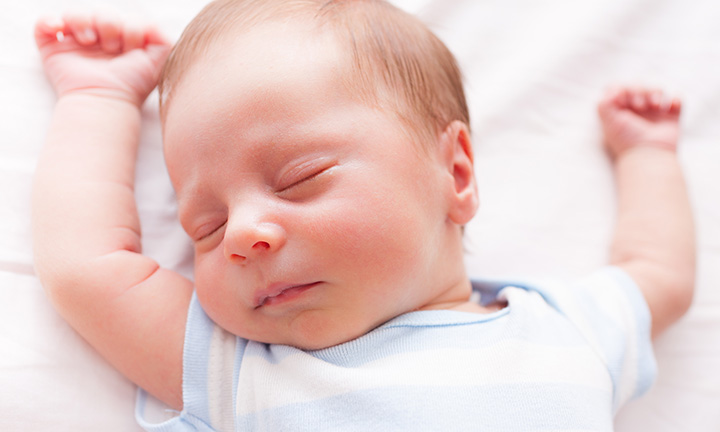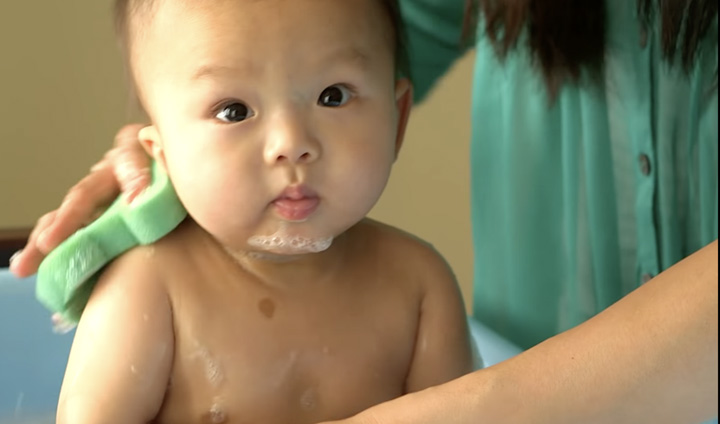
Can a Newborn Sleep with a Pacifier? Your Guide to Pacifiers
Wondering if a newborn can sleep with a pacifier? The short answer is yes—with some important considerations. Pacifiers are generally safe for sleep and can even reduce the risk of sudden infant death syndrome (SIDS). However, timing and usage matter.
Key Takeaways
Here’s what you need to know:
To use pacifiers safely:
Now that we’ve covered the basics of pacifier use during newborn sleep, let’s dive deeper into the benefits, risks, and best practices for safe use.
Do Babies Need Pacifiers?
Choosing to give your baby a pacifier depends on their preferences and your parenting style. A common question from parents is, “Why do babies need pacifiers?” Although they don’t necessarily “need” pacifiers, many newborns are soothed by non-nutritive sucking, and pacifiers may help meet that need. Plus, pacifiers may come with additional benefits that support your baby’s development and well-being.
Here are some of the most researched and discussed benefits of using pacifiers:
When and How to Introduce a Pacifier to Your Baby
You might wonder, "When can a newborn use a pacifier?" or “Can I give my newborn a pacifier while breastfeeding?” Healthy babies can begin using a pacifier from birth. However, if you’re breastfeeding, the AAP recommends waiting until breastfeeding is well established—around 3 to 4 weeks—before introducing a pacifier to avoid any potential breastfeeding disruption.
If your infant won't take a pacifier at first, don’t worry. Some babies need a little encouragement. Try offering the pacifier during a calm moment, gently holding it in place, and experimenting with different shapes or brands until you find one your baby likes. Here are a few additional tips:
If you’re struggling to keep a pacifier in a newborn’s mouth, make sure your baby is truly interested in sucking for comfort. If they keep spitting it out, they may not need or want it at that moment.
Thinking about offering a pacifier? First, take a peek at your baby's growth with our Growth Chart Calculator—a quick and easy way to track their growth.
Pacifiers and Breastfeeding
Introducing a pacifier while breastfeeding is safe for many families, but timing matters. To reduce any chance of nipple confusion, wait until your breastfeeding newborn is feeding well and gaining weight, usually around 3 to 4 weeks of age. If you’re unsure, speak with your baby’s healthcare provider or a lactation consultant.
Tip
If you’re breastfeeding, wait until your baby is about 3 to 4 weeks old—when feeding is well established—before introducing a pacifier. This helps reduce any risk of nipple confusion.
Bottle Fed Babies and Pacifiers
For babies who are bottle-fed, there’s generally less concern about nipple confusion. You can introduce a pacifier from birth or whenever you notice that your baby enjoys sucking for comfort. Pay attention to your baby’s cues to determine the best time to introduce it.
Premature Babies and Pacifiers
Research indicates that using pacifiers for premature babies can provide significant benefits. Non-nutritive sucking may support digestive development and, in some cases, can even reduce hospital stays in the NICU. Always consult your baby's healthcare provider for personalized advice.
What if Your Newborn Won’t Take a Pacifier?
If your newborn is not taking a pacifier, that's perfectly fine. Every baby is unique. You can try different brands, sizes, or shapes, and offer the pacifier at various times throughout the day. You could also gently stroke the side of their mouth while holding the pacifier in until they suck and maintain a good grip.
If your baby continues to reject a pacifier, respect their preferences and explore other soothing techniques, such as swaddling, rocking, or skin-to-skin contact.
Can Babies and Newborns Sleep With a Pacifier?
Yes, as we mentioned earlier, babies can sleep with pacifiers safely. In fact, offering a pacifier at night or during naps may reduce the risk of SIDS and help your baby sleep more soundly.
Below, we’ll offer some pacifier pros and cons for you to consider. But, of course, the decision is based on you and your baby’s preferences.
Benefits of Pacifiers During Sleep
Some benefits of using a pacifier to sleep include:
However, if your baby loses the pacifier during sleep and wakes up, you may need to help them find it. As they grow, they’ll learn to put it back in on their own.
Benefits of Not Using a Pacifier
While pacifiers have their benefits, they’re not essential. Some parents choose to skip them altogether. Here are a few possible downsides:
Potential for dependency. Your little one may come to rely on their pacifier to help them fall asleep, which may lead to crying during the night when it falls out. Giving them a pacifier each time they cry may also lead to them becoming dependent on it, making things more difficult when the time comes to part ways with the pacifier.
Dental concerns. Using and sucking strongly on a pacifier after the age of 2 to 4 years may lead to a change in the shape of the mouth or the way the teeth are lining up.
Ear infections. There is a slightly increased risk of middle ear infections in babies who use pacifiers, particularly after six months of age.
Looking for personalized ways to support your baby’s sleep—pacifier or not? The Smart Sleep Coach by Pampers offers expert-backed tips tailored to your baby’s unique sleep needs. Try it today and help your little one sleep soundly from the start.
Tips on Safety and When to Use a Pacifier
To safely incorporate a pacifier into your newborn’s routine, keep these guidelines in mind:
And remember, it’s perfectly fine if your baby refuses a pacifier. Follow your baby’s cues, and talk with your baby’s healthcare provider if you have concerns.
When “Should” Babies Stop Using Pacifiers?
Wondering when to stop using a pacifier? The AAP suggests weaning by 1 year to help avoid potential dental or speech issues. Still, many children continue pacifier use into toddlerhood and typically stop between ages 2 and 4.
If you’re trying to help your child give up their pacifier:
Every child’s journey is unique. If pacifier weaning becomes challenging, talk to your child’s healthcare provider for additional support.
When to Contact Your Healthcare Provider
Reach out to your baby’s healthcare provider if:
FAQs at a Glance
If you decide to give your newborn a pacifier, you can offer it at any time if they are bottle-fed. However, if you plan to breastfeed, it's best to wait until your baby is 3 to 4 weeks old. This waiting period allows breastfeeding to become well-established.
Babies have an innate need to suck, and providing them with a pacifier between feedings or during sleep can help soothe them and fulfill this need.
The Bottom Line
Offering a pacifier to your baby can provide comfort and soothing benefits and may help protect against SIDS (sudden infant death syndrome). However, it’s best to establish your breastfeeding routine first before introducing a pacifier. It's also wise to consider your little one’s preferences, prioritize safety, and eventually wean your child off pacifier use to reduce the risk of potential dental issues.
Remember that every child is unique, and it’s essential to adapt your approach to suit their individual needs. Consulting with your healthcare provider can offer personalized advice and guidance throughout this process.
As you support your baby’s soothing needs, download the Pampers Rewards App. Earn $10 Pampers Cash for every 10 diaper scans, most boxes have 2 scans!
- American Academy of Pediatrics, Caring for Your Baby and Young Child: Birth to Age 5, 7th ed. (New York: Bantam Books, 2019).
- Mayo Clinic. Guide to Your Baby’s First Years, 2nd ed. (Rochester, MN: Mayo Clinic Press, 2020).
- Healthy Children. “Pacifiers and Thumb Sucking.”
- Healthy Children. “Pacifiers: Satisfying Your Baby's Needs.”
- Mayo Clinic. “Infant development: Milestones from 7 to 9 months.”
- Mayo Clinic. “Pacifiers: Are They Good for Your Baby?”
- NCBI. “Pacifiers (soothers): A user’s guide for parents.”
- NCBI. “Pacifier use and breastfeeding in term and preterm newborns—a systematic review and meta-analysis.”
- NCBI. “Should breastfeeding babies be given pacifiers?”
- NIH. “The effects of giving pacifiers to premature infants and making them listen to lullabies on their transition period for total oral feeding and sucking success.”
Read more about Baby
Related Articles
Join a World of Support
through Pregnancy and Parenthood.
TRACK WITH TOOLS
LEARN WITH EXPERTS
GET REWARDED











